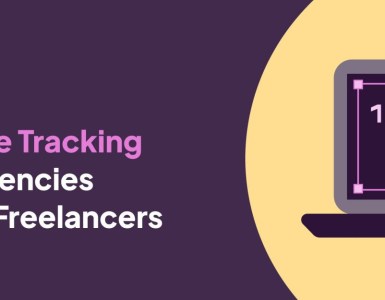A project brief is arguably the most important part of any project. It sets out your project’s aims, objectives, and outcomes.
It’s a crucial reference point for your freelancer and gives valuable insight into your business, especially if they’re working remotely.
Writing the perfect brief is a bit of an art form.
Ideally, it should include every possible detail that your freelancer might need in order to complete your project. But getting this down on paper in a clear and concise way can be harder than it looks.
What’s more, everyone seems to have a slightly different way of doing it, meaning there’s no standard template to follow. Confusing or what?

Get it right, and your project will go like a dream.
Get it wrong and you could be adding unnecessary roadblocks to your process. This could end up being costly for your business and ultimately damage your relationship with your freelancer.
It generally helps to be as detailed as possible in your briefs. This helps to build up trust and cuts down on the amount of to-and-fro communication you need with your freelancer.
The less detail you include, the more flakey your freelancer will think you are and might pass you by altogether.
Use our 10 tips for writing the perfect brief for smooth sailing projects every time:
See things from their point of view:

Your freelancer’s an outsider. They know nothing about your business or product.
Try getting into the mindset of someone who has no prior knowledge of what you do. This will help you to explain what you need in really simple terms. This is harder than it looks.
When you’re overly familiar with something it becomes all the harder to explain in simplistic terms. It’s something that a lot of clients overlook in the brief-writing process.
Where? Why? How? What?
The perfect brief should tell your freelancer what you need, why you need it, and where/how it will be used.
These might be obvious to you, but a freelancer who’s not familiar with your product is in the dark. A commonly uttered phrase from the mouth of most freelancers is “that wasn’t in the brief”.
Don’t assume your freelancer will magically know how you expect to use the finished project, even if it’s blatantly obvious to you.
Who are you?
Include a brief summary of yourself and your product or company. This isn’t superfluous information.
Freelancers are busy people and might not have had time to get the full low-down yet. Help them out by including a brief summary of your product, your aims, brand values, and philosophy.
Any important information or processes should be mentioned here such as product prices. This is important stuff that your freelancer will refer back to during the project.
Budget:
Get this outlined early on in your brief and it will save time for you and your freelancer.
This is the most important determining factor as to whether a freelancer will take on your project or not. Too low and they won’t be able to cover costs.
Too high and, well, are they experienced enough for what you’re asking? Even if you don’t know exactly, a ballpark figure is always helpful.
Don’t say budget TBC. You could end up stringing along with a freelancer who is way out of your price range.
Who is it for? What’s your audience?
Another piece of information that’s blindingly obvious to you, but might not be to your freelancer is your target audience. Don’t omit to mention who your project is for.
Describe who they are in detail. If you sell tennis rackets, you could say that you sell them to people who play tennis.
But, it pays to be explicit here. Your freelancer could misread the situation and think you sell to pro athletes, when in fact, you sell to amateur players. These are very different audiences.
Another tip – Don’t say, everyone.
Your audience is never everyone. Describe why this person should be using your services. Do this and you’ll be well on your way to the perfect brief …
Timeline:
Don’t forget to include a deadline or estimated timeline for your project.
Even if you don’t know at all, don’t leave this section blank. There are plenty of tools out there to help you estimate how long a project will take. As with budget, it’s better to give a rough estimation than nothing at all.
Being vague or ambiguous about this will only put off your freelancer. Freelancers have to plan ahead at all times.
This means they’ll want to know an estimate of when your project will be completed so that they can line up the next one.
What works for you? What doesn’t?
To give your freelancer a complete idea of your market positioning, it’s helpful to mention competitors. Share competitors that you like and competitors that you don’t like.
Explain what they do well and what they don’t do so well. Feel free to share examples of similar projects that you like/dislike too.
This will give your freelancer a more rounded idea of what it is you want and will ensure they avoid things you don’t.
Does it pass the mom test?
The perfect brief should be so clear, even your mom could understand it (and we mean this in the most polite way possible…).
Don’t use language, acronyms or jargon that are specific to your company. Your freelancer won’t have a clue what this means. Remember to keep your language simple and concise.
Your brief needs to be detailed, but it shouldn’t be a novel. The information should be easy to scan and digest. You can even consider using bullet points if it’s appropriate.
State the facts:
Yes, you want your project to be exciting and appealing to your freelancer, but stick with the facts. Don’t embellish the truth or exaggerate.
If your project is for a local cafe, resist the temptation to bend the truth. Don’t big it up as a multi-national catering company.
Your freelancer will have to spend extra time cutting through all the bluster.
Write your own brief:
A lot of freelancers provide a project brief template for clients to fill in. These are designed to make the process quicker and pain-free for the client.
But, these templates can often be difficult to understand and overly simplistic for your needs. Project briefs are rarely a one-size-fits-all situation. If you’re struggling to fit all of your requirements into their template, don’t force it.
Instead, write your own brief. Make sure you answer the majority of the questions in their template though – the freelancer has included them for a reason.
But, outside of this, feel free to add in as much extra detail as your project needs. If you do end up going down this route, mention it to your freelancer and talk them through the changes you’ve made to their template.
Talk it out
Once you’ve written your perfect brief, set aside a small amount of time to talk over it with your freelancer.
They’ll identify any areas you’ve missed and highlight any information that’s still needed. This is a quick solution that’ll save time in the future.
You’ll be surprised how valuable their input is, and it’ll give you both a chance to air any concerns you might have about the project before it formally begins.
Perfect brief bonus tip – Don’t write one:
Yep – you read that right!
Have a chat instead.
Often, a sit-down meeting with your freelancer where you both talk over your project requirements in depth can be just as good, if not better, than writing a formal project brief.
Your freelancer can ask any questions they might have upfront, and get all the details straight from the horse’s mouth.
Need more help? Why not have a look at our example project briefs:
Want to learn more about working with freelancers? Download our free Ebook.
Ready to hire? Our marketplace of over 410,000 freelancers has the skills and expertise needed to skyrocket your business to the next level. From marketers to designers, copywriters to SEO experts – browse the talented bunch here!



